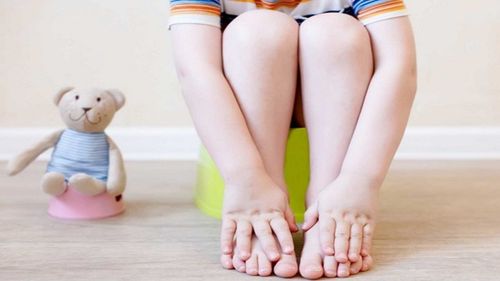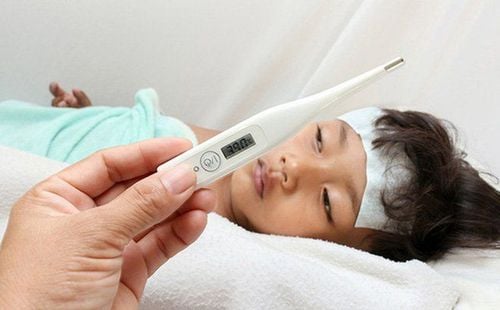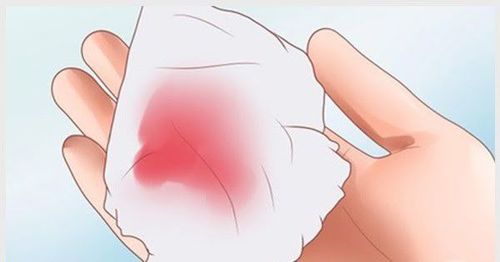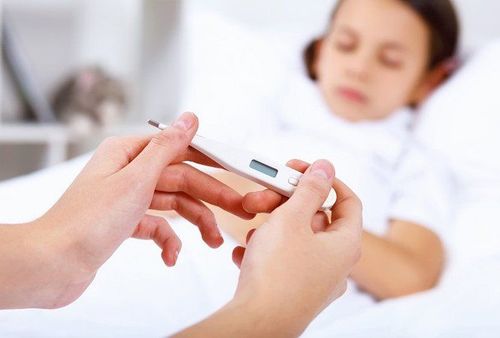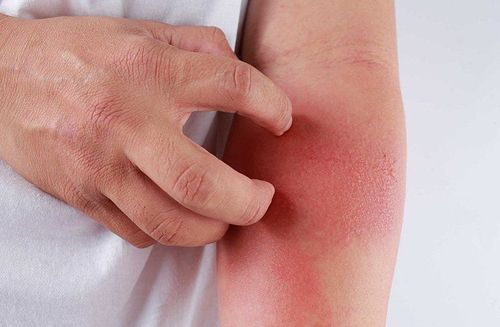This is an automatically translated article.
Dengue fever epidemic is still occurring quite commonly in some localities, the clinical manifestations are quite diverse and the rate of severe progression is high. In order to help parents and caregivers know how to take care and timely detect and treat a child suffering from dengue fever, here are the instructions of Professor Dr. Pham Nhat An - Director of the Pediatric Center at the hospital. Vinmec Times City1. Typical symptoms when children have dengue fever
1.1 Fever phase: Sudden, persistent high fever. Headache, loss of appetite, nausea. Muscle pain, joint pain, eye pain. Congestive skin, petechiae under the skin, bleeding gums or nosebleeds. 1.2. Critical stage: Usually on 3-7 days of illness. The patient may still have a fever or have a reduced fever. Possible manifestations:
Eyelid swelling, abdominal pain, vomiting, chest pain, difficulty breathing. If severe, there may be signs of shock: struggling, restless or lethargic, cold extremities, cold and moist skin, body temperature may drop suddenly, little urine. Spotted purpura under the skin or purpura usually on the front of the legs and the insides of the arms, abdomen, thighs, flanks or bruises; There may be an itchy maculopapular rash. Nosebleeds, bleeding gums, bloody urine, prolonged or earlier menstrual period. Gastrointestinal bleeding (vomiting blood or passing black/bloody stools), pulmonary and cerebral hemorrhage are severe manifestations. 1.3. Recovery phase: Patient has no fever, general condition improves, appetite, frequent urination
2. Care instructions when a child has dengue fever Closely monitor the child's temperature, notify medical staff whenever If you notice your child has a fever.
Combine antipyretic drugs for children under the guidance of medical staff, absolutely do not arbitrarily use antipyretic drugs containing Aspirin, Ibuprufen because these drugs increase the risk of causing bleeding.
Daily hygiene of eyes, nose and throat for children with 0.9% physiological saline solution.
Nourishing: Give the child soft, liquid, easy-to-digest foods such as porridge, flour, milk. Do not give children foods and drinks that are brown/red in color (coca, pepsi, watermelon, chocolate...) because it is difficult to distinguish when the child vomits blood.
Encourage children to drink plenty of water: cooled boiled water, fruit juices (coconut, orange, lemon ..) oresol, hydrite, or diluted porridge...
Wear soft, sweat-wicking clothing and Pay special attention to ensuring skin hygiene for children: Change clothes and take a quick bath with warm water in the bathroom when the child does not have a fever.
Closely monitor the child's condition, detect early warning signs, severe signs for timely handling:
Struggling, lethargic, lethargic. Cold extremities, moist skin, hypothermia. Abdominal pain, chest pain, difficulty breathing. Nosebleeds, bleeding gums. Vomiting a lot, vomiting blood, passing black or bloody stools, urinating less. 3. Disease prevention instructions Avoid mosquito bites: Sleep under a mosquito net, do not let children play in a dark place, apply mosquito repellent. Kill mosquitoes and swarms: the house is always cool, clean and tidy. Do not leave water containers or if any, cover them and regularly change and remove stagnant water. In addition to the above instructions, parents should always closely monitor the child's temperature, notify the doctor immediately if they notice that the child has a fever, absolutely do not arbitrarily take medicine without a doctor's prescription.
Please dial HOTLINE for more information or register for an appointment HERE. Download MyVinmec app to make appointments faster and to manage your bookings easily.





